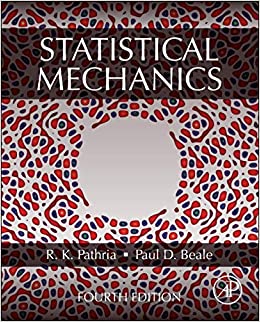Following the results of Problem 12.28, one can form a mean field theory by choosing a special
Question:
Following the results of Problem 12.28, one can form a mean field theory by choosing a special form for the density function \(ho\) and solve for \(ho\). Suppose that the Hamiltonian describes a nearest neighbor Ising model of the form
\[-\beta H=\sum_{(i j)} K s_{i} s_{j}+h \sum_{i} s_{i}\]
Choose the density of the special form \(ho=\prod_{i} ho_{i}\left(s_{i}\right)\). Minimize the variational free energy by evaluating the functional derivative \(\delta \beta F_{ho} / \delta ho_{\alpha}\left(s_{\alpha}\right)=0\), where \(\alpha\) is one of the sites. Show that \(ho_{\alpha}\left(s_{\alpha}\right)=\exp \left(z K\langle sangle s_{\alpha}+h s_{\alpha}\right) / Q_{M F}\) minimizes the variational free energy, where \(z\) is the number of nearest neighbors in the lattice and \(Q_{M F}=2 \cosh (z K\langle sangle+h)\). This gives the Ising model mean field theory discussed in Section 12.5, which requires the average spin to solve the self-consistent mean field equation \(\langle sangle=\tanh ((K z+h)\langle sangle)\).
Step by Step Answer:






